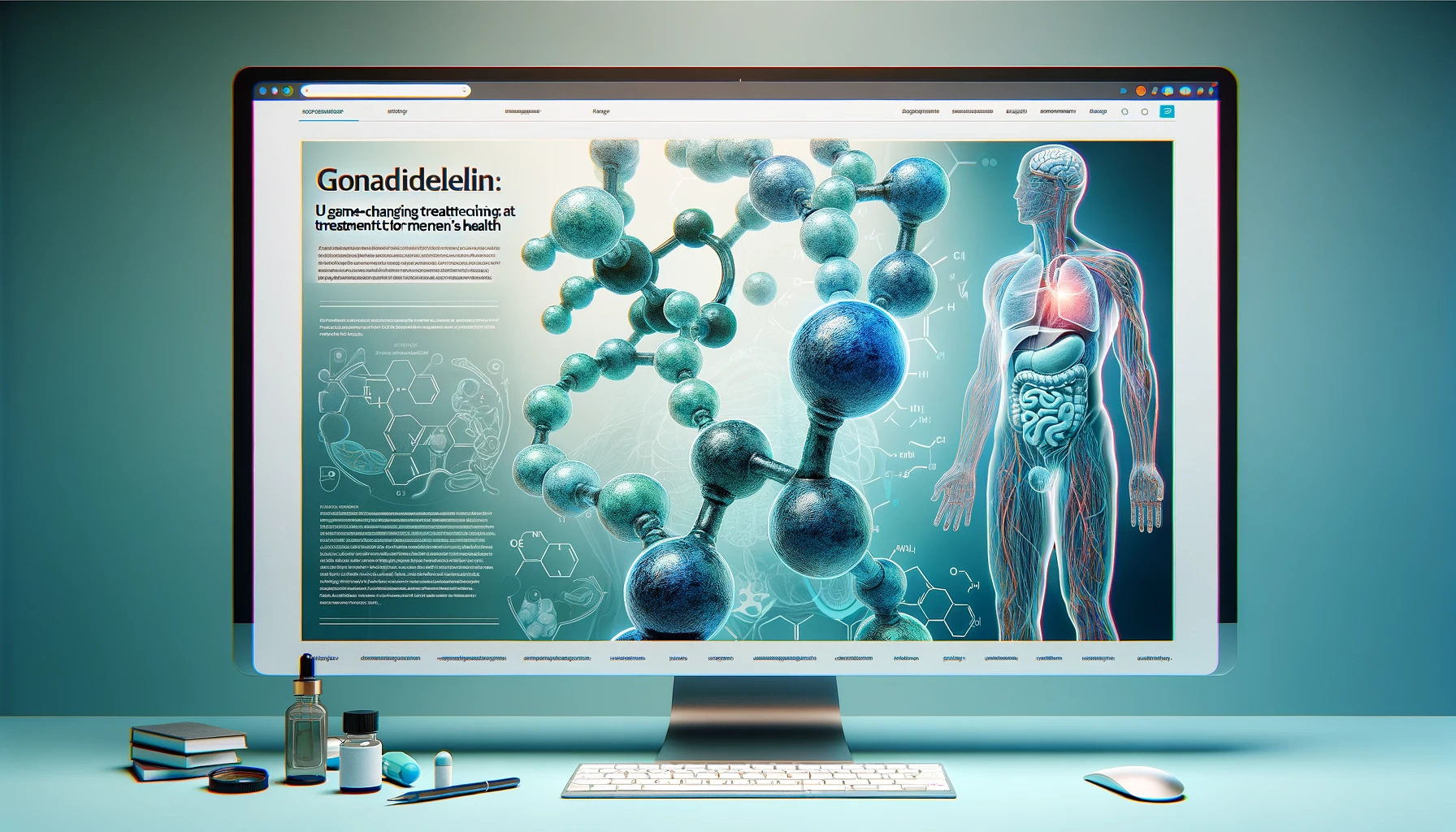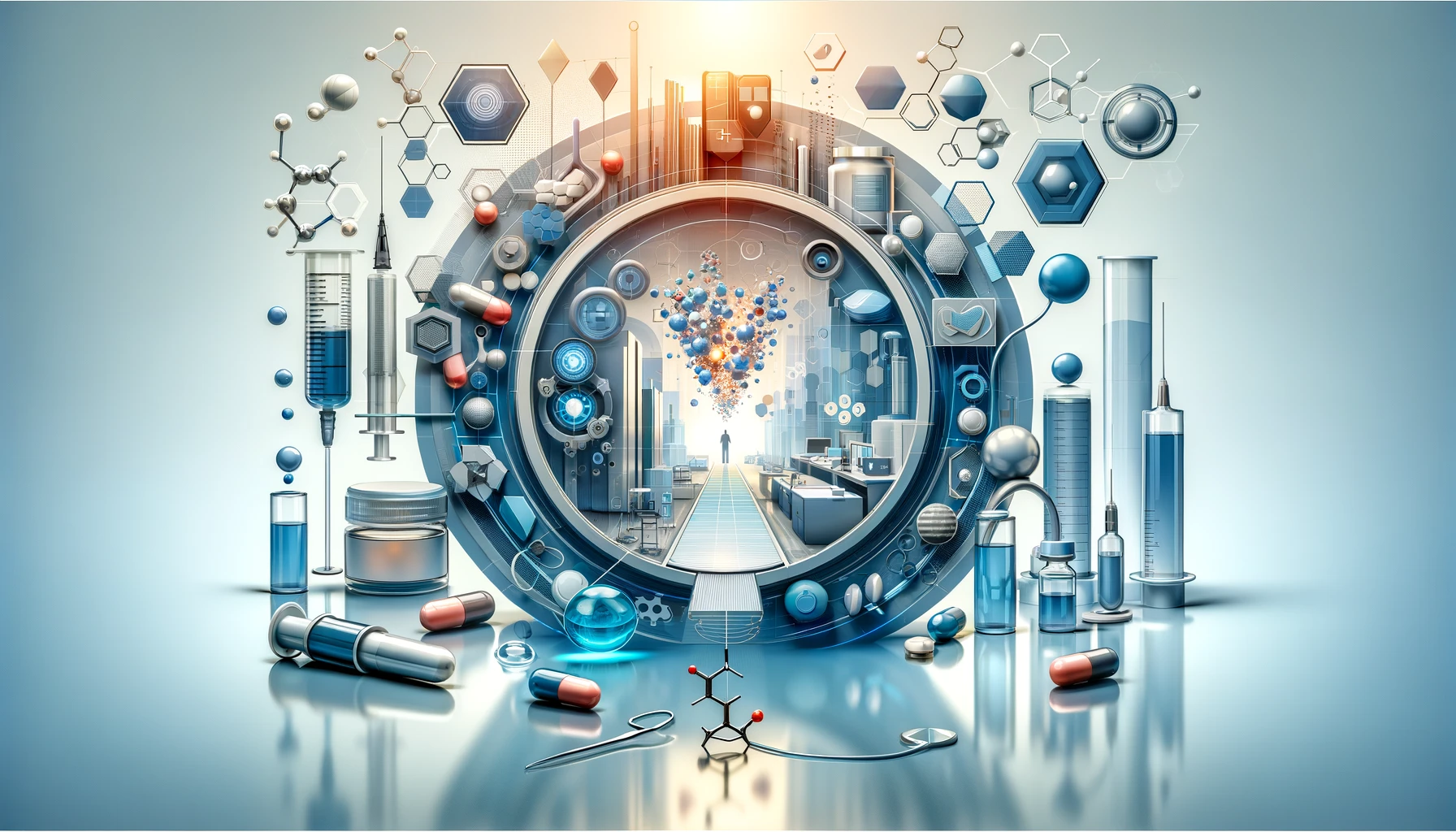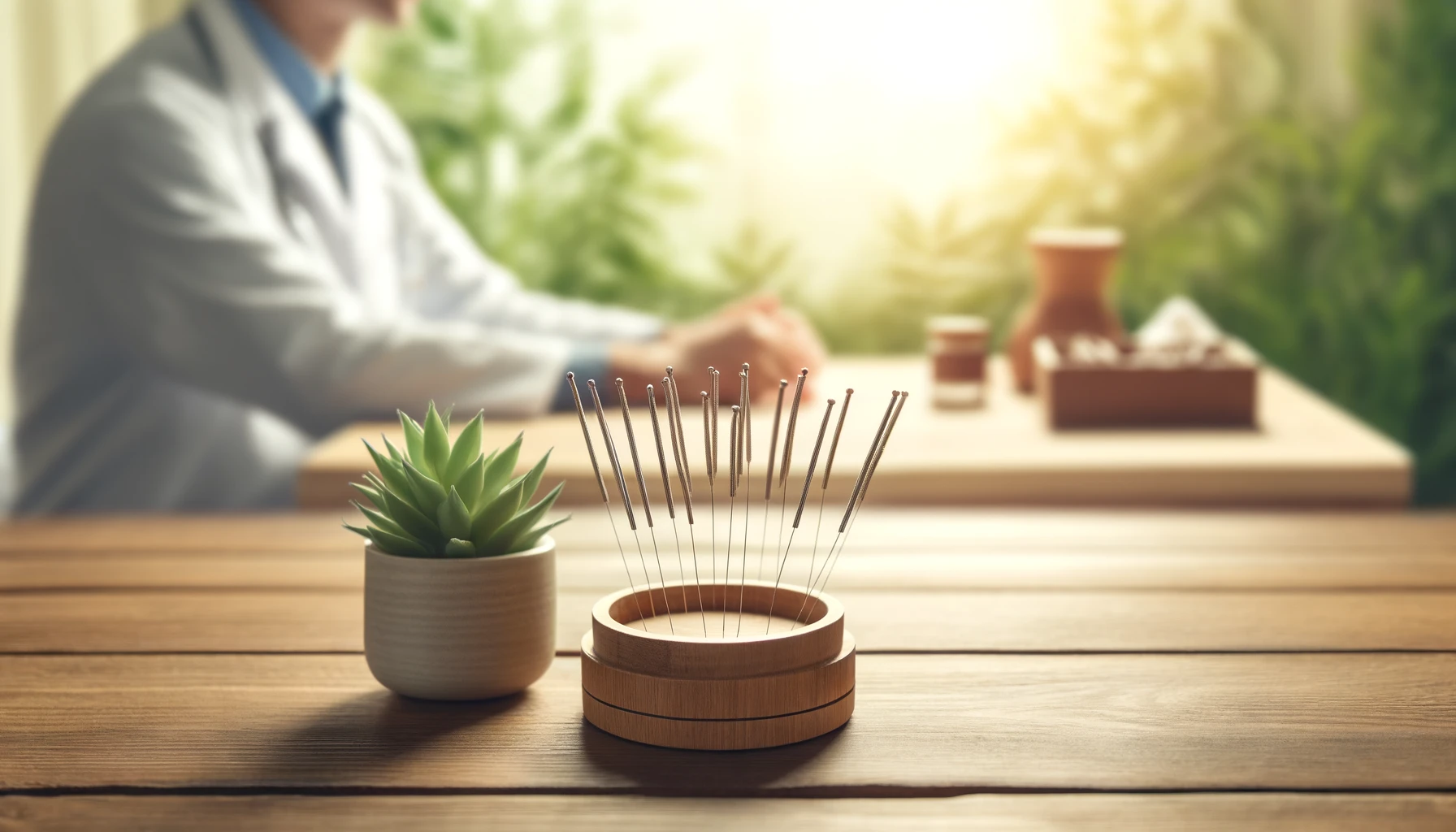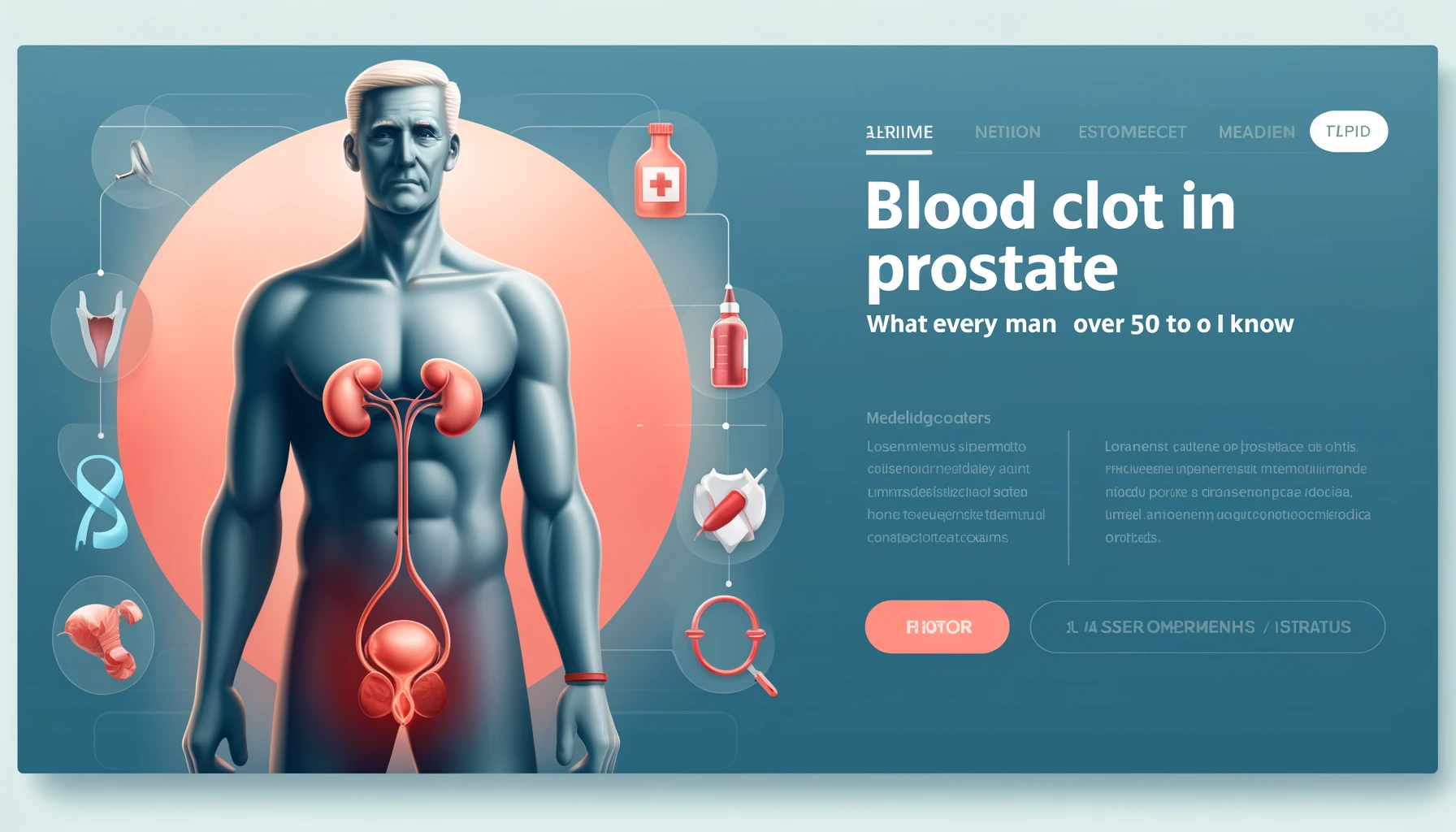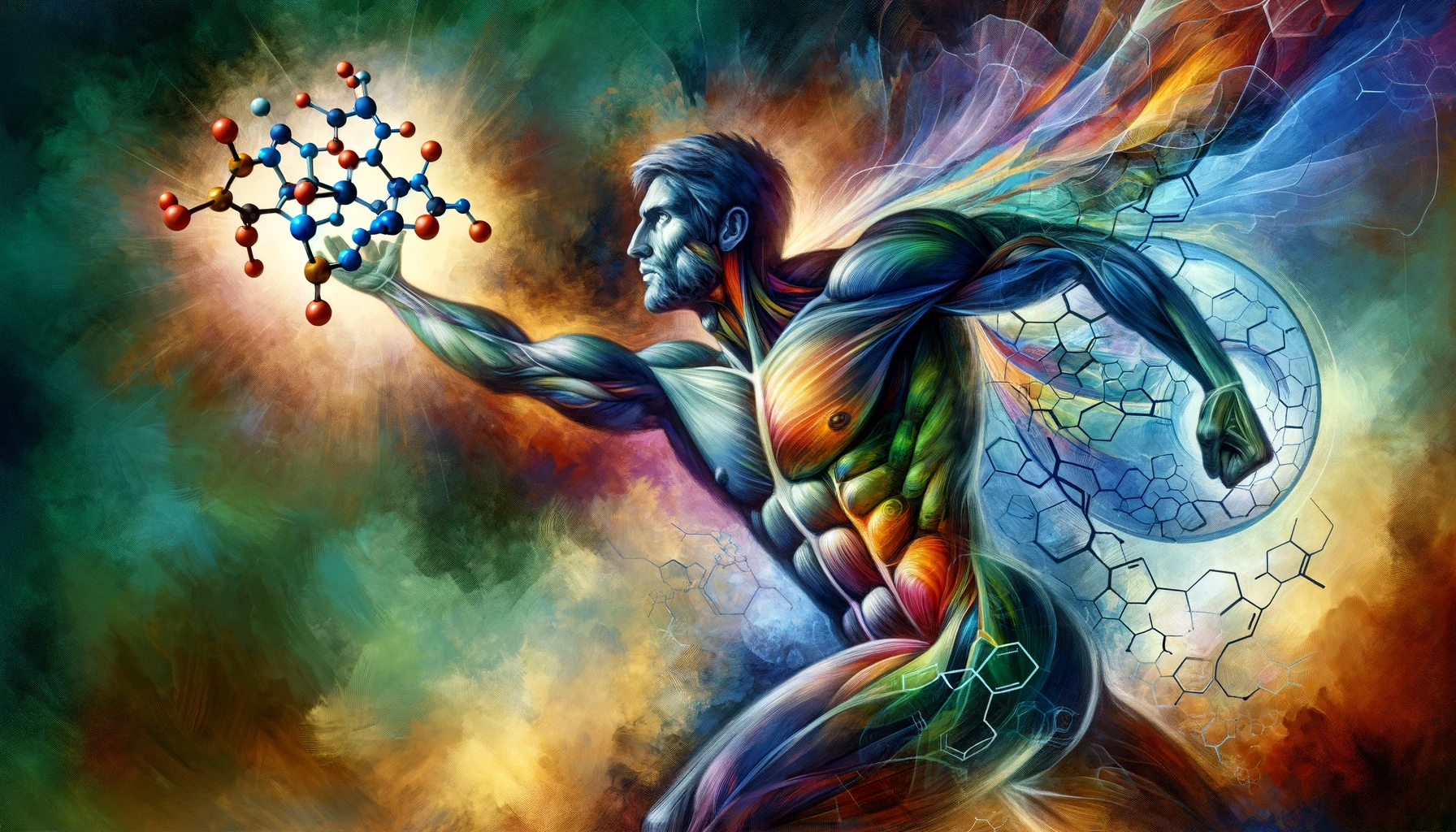Gonadorelin Erectile Dysfunction
Erectile dysfunction (ED) is a common challenge many men face, affecting both physical and psychological health. Gonadorelin, a hormone-releasing hormone, is emerging as a potential treatment for ED, especially in men undergoing hormone therapy.
This article explores how Gonadorelin can be used to treat erectile dysfunction, backed by scientific evidence and clinical trials.
Contents
- 1 Understanding Erectile Dysfunction
- 2 Overview of Gonadorelin
- 3 Gonadorelin and Hormone Therapy
- 4 Scientific Studies on Gonadorelin
- 5 Benefits of Gonadorelin for Erectile Dysfunction
- 6 Comparing Gonadorelin with Other Treatments
- 7 Side Effects and Considerations
- 8 How to Use Gonadorelin
- 9 Patient Case Studies
- 10 Expert Opinions
- 11 Cost and Accessibility
- 12 Future of Gonadorelin and Erectile Dysfunction Treatment
- 13 FAQs about Gonadorelin Erectile Dysfunction Treatment
- 14 Conclusion – Gonadorelin Erectile Dysfunction
- 15 Men's Health Related Articles
Understanding Erectile Dysfunction
Erectile dysfunction is characterized by the inability to maintain an erection sufficient for sexual intercourse. Affecting over 30 million men in the United States alone, the causes of ED can be both psychological and physiological, including hormonal imbalances, cardiovascular diseases, and mental health issues.
Physiological Causes:
- Cardiovascular Diseases: Poor cardiovascular health can impede blood flow, crucial for achieving an erection.
- Diabetes: High blood sugar levels can damage nerves and blood vessels, which are critical for an erection.
- Hormonal Imbalances: Low levels of testosterone and other hormonal disorders can directly affect erectile function.
- Neurological Disorders: Conditions like Parkinson’s disease and multiple sclerosis can disrupt signals from the brain to the penis necessary for an erection.
Psychological Causes:
- Stress and Anxiety: Psychological stress can affect sexual arousal and performance.
- Depression: This common mood disorder can lead to a reduction in libido and subsequently ED.
- Relationship Issues: Interpersonal problems can lead to stress and anxiety, contributing to ED.
Lifestyle Factors:
- Alcohol and Smoking: Both can damage blood vessels and reduce the effectiveness of the circulatory system, impacting erectile function.
- Lack of Physical Activity: A sedentary lifestyle can contribute to numerous health issues, including ED.
- Poor Diet: A diet high in fats and sugars can lead to conditions like obesity and diabetes, which are risk factors for ED.
Prevalence of Erectile Dysfunction
The prevalence of ED varies by age and underlying health conditions. It is estimated that about 40% of men are affected by ED by the age of 40, and nearly 70% of men by the age of 70. The condition’s widespread nature underscores its significance as a public health concern.
Overview of Gonadorelin
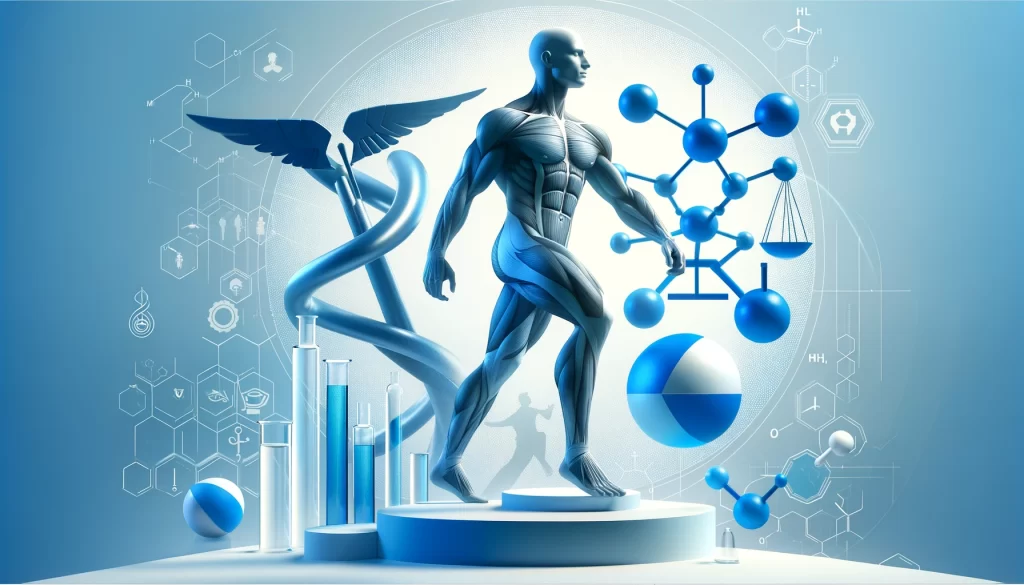
Gonadorelin is a synthetic form of gonadotropin-releasing hormone (GnRH), which is a pivotal hormone in the regulation of the reproductive system in both men and women. As a therapeutic agent, Gonadorelin plays an essential role in diagnosing and treating a variety of hormonal disorders, including those related to fertility and the production of sex hormones.
Function and Mechanism of Gonadorelin
Gonadorelin works by mimicking the natural GnRH produced by the hypothalamus. GnRH is responsible for signaling the pituitary gland to release two key hormones: luteinizing hormone (LH) and follicle-stimulating hormone (FSH). These hormones are vital for the normal functioning of the reproductive organs. In males, LH stimulates the production of testosterone from the Leydig cells in the testes, while FSH is critical for spermatogenesis.
The use of Gonadorelin in therapy is twofold:
- Diagnostic Use: It is used to assess pituitary function by stimulating the gland to release LH and FSH. This response can help diagnose conditions related to pituitary function or hypothalamic dysfunction.
- Therapeutic Use: It is used to treat cases of hypogonadism or other conditions where there is a deficiency in LH and FSH, thereby aiding in the normalization of hormone levels which can improve symptoms such as erectile dysfunction.
Usage of Gonadorelin
Gonadorelin is administered typically through injections, which can be either subcutaneous or intravenous, depending on the required clinical use. For chronic conditions, such as hypogonadotropic hypogonadism, Gonadorelin can be delivered through a pump that provides a pulsatile release, mimicking the body’s natural secretion patterns. This method helps in maintaining a natural rhythm of hormone production, which is crucial for the effectiveness of the treatment.
Relevance of Gonadorelin in Treating Erectile Dysfunction
Gonadorelin’s relevance in treating erectile dysfunction (ED) primarily stems from its ability to modulate the body’s hormone levels. Since certain forms of ED are linked to hormonal imbalances, particularly testosterone deficiency, Gonadorelin can play a critical role. By stimulating the natural production of testosterone through its action on LH and FSH, Gonadorelin addresses one of the root causes of hormonal ED. This approach not only helps in alleviating the symptoms of ED but also aids in restoring the overall hormonal balance, which is essential for the general health and well-being of the patient.
Gonadorelin and Hormone Therapy
Gonadorelin, as a synthetic analog of gonadotropin-releasing hormone (GnRH), plays a significant role in hormone therapy, particularly for conditions stemming from or causing hormonal imbalances. Its application in hormone therapy is grounded in its ability to regulate the secretion of key reproductive hormones, which are crucial not only for reproductive health but also for overall physiological and psychological well-being.
Role of Gonadorelin in Hormone Therapy
The primary function of Gonadorelin in hormone therapy is to stimulate the pituitary gland to release luteinizing hormone (LH) and follicle-stimulating hormone (FSH). These hormones are essential for the regulation of sex hormones such as testosterone in men and estrogen and progesterone in women. Here’s how Gonadorelin contributes to hormone therapy:
- Stimulation of Hormone Production: By inducing the release of LH and FSH, Gonadorelin helps to kickstart the natural hormone production processes in the body, which can be beneficial for individuals suffering from conditions like hypogonadotropic hypogonadism, where these hormones are underproduced.
- Restoration of Hormonal Balance: In conditions where there is a disruption in the hormonal equilibrium, such as certain types of infertility or testosterone deficiency, Gonadorelin can help restore balance, thereby alleviating the symptoms associated with these conditions.
- Pulsatile Administration for Natural Rhythms: For therapeutic applications, Gonadorelin is often administered in a pulsatile fashion to mimic the body’s natural hormone release patterns. This method is particularly effective in restoring normal functioning of the hypothalamic-pituitary-gonadal axis.
Benefits of Gonadorelin in Hormone Therapy
The use of Gonadorelin in hormone therapy offers several benefits, particularly in comparison to direct hormone supplementation:
- Enhanced Natural Production: Unlike direct hormone supplements, Gonadorelin encourages the body to increase its hormone production, which can lead to more sustained and balanced hormone levels.
- Reduced Side Effects: Because it stimulates natural hormone production, the body is less likely to experience the high peaks and low troughs associated with synthetic hormone replacements, potentially reducing the risk of side effects.
- Versatility: Gonadorelin can be used in both men and women for different therapeutic purposes, making it a versatile tool in hormone therapy.
Applications in Erectile Dysfunction
In the context of erectile dysfunction (ED), Gonadorelin is particularly relevant when ED is linked to a deficiency in testosterone, a common issue in older men or those with specific pituitary disorders. By increasing LH and FSH levels, Gonadorelin indirectly boosts testosterone levels, potentially improving both libido and erectile function. This is crucial because while traditional ED treatments like sildenafil focus on the symptoms of erectile dysfunction, Gonadorelin addresses one of the underlying causes: hormonal imbalance.
Challenges and Considerations
Despite its benefits, the use of Gonadorelin in hormone therapy must be carefully managed:
- Regulation of Dosage: Incorrect dosage can lead to inadequate or excessive hormone production.
- Monitoring: Patients require regular monitoring to ensure that hormone levels are maintained within a healthy range and to adjust treatment as necessary.
- Long-term Dependency: Prolonged use might lead to dependency or reduce the pituitary gland’s responsiveness, necessitating adjustments in the treatment protocol.
Scientific Studies on Gonadorelin
Gonadorelin has been the subject of numerous scientific studies that explore its efficacy and potential applications in hormone therapy. These studies have been pivotal in establishing Gonadorelin as a critical agent for treating hormonal deficiencies and disorders related to the reproductive system.
Summary of Key Research Findings
Effectiveness in Inducing Hormone Secretion:
- Research has consistently shown that Gonadorelin effectively stimulates the pituitary gland to release LH and FSH. This is particularly significant for treating conditions like hypogonadotropic hypogonadism, where patients suffer from low levels of these hormones due to underactivity of the hypothalamus or pituitary.
Use in Fertility Treatments:
- Studies have documented Gonadorelin’s utility in fertility treatments, especially in protocols involving assisted reproductive technologies (ART). By facilitating the natural cycle of hormone secretion, Gonadorelin improves the effectiveness of treatments like in vitro fertilization (IVF).
Management of Hormone-Dependent Conditions:
- Clinical trials have explored the use of Gonadorelin in managing conditions such as precocious puberty and endometriosis. The ability of Gonadorelin to control the release of sex hormones makes it beneficial in managing the progression of these conditions.
Specific Studies and Results
- A landmark study published in the Journal of Clinical Endocrinology and Metabolism detailed how Gonadorelin was used to treat men with hypogonadotropic hypogonadism. The study found that regular administration of Gonadorelin significantly increased both LH and testosterone levels, leading to improved symptoms of hypogonadism, including better sexual function and mood.
- Another significant study involved the use of Gonadorelin in women undergoing fertility treatment. Published in the Fertility and Sterility journal, the study concluded that Gonadorelin, when used to trigger ovulation, resulted in higher pregnancy rates compared to other treatments. This highlighted its role in optimizing reproductive health and enhancing the success rates of fertility therapies.
Implications of Research on Gonadorelin Therapy
The implications of these studies for clinical practice are substantial:
- Tailored Treatments: The ability to stimulate specific hormone release allows for more tailored treatment approaches, addressing the unique hormonal profiles of patients.
- Alternative to Continuous Hormone Replacement Therapy (HRT): For patients who are at risk of side effects from traditional HRT, Gonadorelin presents a viable alternative, offering a more natural rhythm of hormone production.
- Broader Therapeutic Applications: The expanding body of research suggests potential new applications for Gonadorelin in other hormone-related disorders, potentially broadening its therapeutic scope.
Future Research Directions
Ongoing and future studies are expected to focus on:
- Long-term Efficacy and Safety: Further research is needed to understand the long-term impacts of Gonadorelin therapy, particularly concerning its prolonged use.
- Comparative Studies: More comparative studies with other hormone therapies could clarify the specific advantages or disadvantages of Gonadorelin relative to other options.
- New Therapeutic Uses: Exploring additional uses of Gonadorelin in other hormone-dependent conditions, such as testosterone deficiency syndromes, could widen its applicability in clinical endocrinology.
Benefits of Gonadorelin for Erectile Dysfunction

Gonadorelin, as a synthetic form of gonadotropin-releasing hormone (GnRH), offers significant benefits for the treatment of erectile dysfunction (ED), particularly when the condition is linked to hormonal imbalances. This approach not only targets the symptoms of ED but also addresses one of its underlying causes: inadequate levels of sex hormones, especially testosterone.
Mechanism of Action in Treating ED
Gonadorelin functions by stimulating the pituitary gland to release luteinizing hormone (LH) and follicle-stimulating hormone (FSH). These hormones are crucial for the production of testosterone in men. Testosterone plays a pivotal role in maintaining sexual function, including libido and the ability to achieve and maintain an erection. By normalizing testosterone levels, Gonadorelin can directly improve erectile function in men whose ED is linked to hormonal deficiencies.
Benefits of Gonadorelin Over Traditional ED Treatments
Addresses Hormonal Imbalances:
- Unlike traditional ED medications, such as sildenafil (Viagra), which primarily address the vascular aspects of ED, Gonadorelin tackles the hormonal root causes. This can lead to more sustainable and comprehensive improvements in sexual health.
Sustainable Treatment:
- Gonadorelin promotes the body’s natural hormone production, which may lead to sustained improvements in erectile function without the need for continuous medication.
Potential for Broader Health Benefits:
- By optimizing hormone levels, Gonadorelin can also impact other aspects of health affected by hormones, such as mood, muscle mass, and bone density, providing a holistic improvement in overall well-being.
Clinical Evidence Supporting Gonadorelin in ED Treatment
Several studies have highlighted the effectiveness of Gonadorelin in treating ED:
- Research has shown that men treated with Gonadorelin experienced an increase in their natural testosterone levels, which correlated with improvements in sexual function and satisfaction.
- In clinical settings, patients with hypogonadotropic hypogonadism, a condition where the body produces insufficient levels of certain hormones including LH and FSH, have benefited from Gonadorelin therapy in terms of both hormonal balance and erectile function.
Patient Testimonials and Success Stories
Many patients on Gonadorelin therapy have reported positive outcomes:
- Testimonials often highlight significant improvements in libido and erectile function, which contribute to enhanced sexual relationships and overall life satisfaction.
- Success stories from patients who had previously struggled with traditional ED treatments often emphasize the effectiveness of Gonadorelin in providing a more natural solution to their hormonal issues.
Considerations and Limitations
While Gonadorelin presents many benefits, it is not suitable for all types of ED. It is most effective in cases where ED is a symptom of underlying hormonal imbalances rather than purely vascular issues. Patients considering Gonadorelin should undergo thorough hormonal evaluations to determine if this treatment is appropriate for their specific condition.
Comparing Gonadorelin with Other Treatments
Erectile dysfunction (ED) can be addressed through various treatments, each with unique mechanisms of action and implications for patient health. Gonadorelin, a synthetic form of gonadotropin-releasing hormone (GnRH), offers a distinctive approach by targeting hormonal causes of ED. Comparing Gonadorelin with other conventional treatments illuminates its specific advantages and potential applications.
Phosphodiesterase Type 5 Inhibitors (PDE5i):
- Examples: Sildenafil (Viagra), Tadalafil (Cialis), and Vardenafil (Levitra).
- Mechanism: These drugs work by enhancing the effects of nitric oxide, a natural chemical the body produces that relaxes muscles in the penis, increasing blood flow and allowing an erection in response to sexual stimulation.
- Use Case: Most effective in treating ED caused by vascular issues, not suitable for hormone-related ED unless combined with other treatments.
- Limitations: They do not affect sexual desire and are only effective in the presence of sexual stimulation. They can also have side effects like headaches, facial flushing, and potential interactions with other medications.
Testosterone Replacement Therapy (TRT):
- Mechanism: Direct supplementation of testosterone through injections, patches, or gels.
- Use Case: Used for men with ED linked to low testosterone levels.
- Limitations: This can cause side effects such as increased risk of heart disease, prostate growth, and potential infertility. It requires careful monitoring and is not suitable for all patients, especially those at risk of prostate cancer.
Comparing Gonadorelin
- Mechanism: Stimulates the body’s natural production of LH and FSH, which in turn stimulates testosterone production.
- Use Case: Particularly effective for men whose ED is due to hormonal imbalances, especially in conditions like hypogonadotropic hypogonadism.
- Benefits: Gonadorelin offers a more natural approach by encouraging the body to produce hormones at a natural rhythm, potentially reducing side effects associated with direct hormone supplementation.
- Limitations: Requires precise dosing and timing to mimic the body’s natural hormone pulses, and it may be less effective in cases where ED is not primarily due to hormonal issues.
Penile Injections and Vacuum Devices:
- Mechanism: Penile injections involve injecting medication directly into the penis to induce an erection. Vacuum devices create a vacuum that pulls blood into the penis.
- Use Case: These are alternatives for those who cannot take oral medications or have not found them effective.
- Limitations: Injections can be painful and can cause priapism (a prolonged erection). Vacuum devices require some manual dexterity and interrupt the spontaneity of sexual encounters.
Surgical Treatments:
- Mechanism: Procedures like penile implants, involve the surgical insertion of devices that can create an erection mechanically.
- Use Case: Typically considered as a last resort when other treatments have failed.
- Limitations: Carries risks inherent to surgery, such as infections and implant problems. It is also irreversible.
ALSO READ: How To Use Olive Oil For Erectile Dysfunction – Unlocking the Power of Nature (2024 Updated)
Side Effects and Considerations
Gonadorelin therapy, while offering promising benefits for treating certain types of erectile dysfunction (ED), especially those related to hormonal imbalances, comes with its own set of side effects and considerations. Understanding these is crucial for patients and healthcare providers to manage and mitigate potential risks effectively.
Common Side Effects of Gonadorelin
Injection Site Reactions:
- Symptoms can include pain, redness, and swelling at the site of injection. These reactions are generally mild and resolve on their own.
Flu-like Symptoms:
- Some individuals may experience flu-like symptoms shortly after administration, including fever, headaches, and fatigue. These symptoms are usually temporary.
Hormonal Fluctuations:
- Given that Gonadorelin stimulates the production of hormones like LH and FSH, patients might experience symptoms associated with fluctuations in these hormone levels such as mood swings, changes in libido, and weight fluctuations.
Gastrointestinal Issues:
- Nausea and abdominal discomfort have been reported by some patients undergoing Gonadorelin treatment.
Less Common but Serious Side Effects
Hypersensitivity Reactions:
- Although rare, some patients might experience allergic reactions to Gonadorelin, which can include difficulty breathing, hives, and swelling of the face or throat. These require immediate medical attention.
Increased Risk of Ovarian Hyperstimulation Syndrome (OHSS) in Women:
- In female patients, particularly those undergoing fertility treatments, there is a risk of developing OHSS, a condition characterized by enlarged ovaries and fluid accumulation in the abdomen and chest.
Long-term Considerations
Tolerance and Dependence:
- Long-term use of Gonadorelin can lead to the pituitary gland becoming less responsive to the drug, potentially necessitating higher doses to achieve the same effect or a reevaluation of treatment strategy.
Effect on Other Hormone Levels:
- As Gonadorelin affects the secretion of several key hormones, it may inadvertently impact other hormone-driven processes and conditions, requiring close monitoring of hormone levels throughout the treatment.
Patient-Specific Considerations
Underlying Health Conditions:
- Patients with certain health conditions, such as prostate cancer or other hormone-sensitive cancers, should use Gonadorelin cautiously, as it can potentially exacerbate these conditions.
Age and Gender:
- The effectiveness and side effects of Gonadorelin can vary significantly depending on the age and gender of the patient, with younger patients generally experiencing more robust hormonal responses.
Monitoring and Management
To safely use Gonadorelin, it is essential to have regular follow-ups with healthcare providers. These check-ups should include:
- Hormone Level Assessments: Regular monitoring of hormone levels to ensure they remain within the desired range.
- Evaluation of Symptom Progression: Tracking improvements in symptoms of ED and any potential side effects.
- Adjustments to Dosage: Modifying the dosage or frequency of administration as needed based on the patient’s response and side effects.
How to Use Gonadorelin
Gonadorelin, as a synthetic form of gonadotropin-releasing hormone (GnRH), is used for various medical conditions, including the treatment of certain types of infertility and the management of hormone-related disorders like erectile dysfunction (ED). Proper administration and adherence to prescribed dosages are crucial for the effectiveness and safety of Gonadorelin therapy.
Administration Methods
Injection Types:
- Subcutaneous (SubQ): Gonadorelin is often administered via subcutaneous injections, which involve injecting the medication into the fatty layer just beneath the skin. This method is commonly used for ongoing, home-based treatments.
- Intravenous (IV): For diagnostic purposes or in clinical settings, Gonadorelin may be administered intravenously to rapidly assess pituitary function by observing the immediate hormonal response.
Pulsatile Pump Systems:
- For conditions that require long-term management, such as hypogonadotropic hypogonadism, Gonadorelin can be delivered using a pulsatile pump. This device mimics the natural secretion rhythms of GnRH from the hypothalamus, enhancing physiological hormone production. The pump is programmed to release small doses at specific intervals, typically every 90 to 120 minutes.
Dosage Guidelines
The dosage of Gonadorelin varies depending on the condition being treated and the individual patient’s response to therapy. General guidelines include:
- Diagnostic Use: A typical dose for diagnostic purposes might range from 100 to 500 micrograms, administered as a single injection to test pituitary function.
- Therapeutic Use: For therapeutic purposes, especially in cases of chronic conditions like ED due to hormonal imbalances, the dosage can be adjusted based on the patient’s hormonal levels and response. This often involves regular monitoring and adjustments by a healthcare provider.
Best Practices for Effectiveness
Consistent Monitoring:
- Regular monitoring of hormone levels is crucial to ensure that the treatment is effectively regulating hormone production without causing excessive fluctuations that could lead to side effects or diminished efficacy.
Adherence to the Prescribed Regimen:
- Patients should strictly adhere to the prescribed regimen, including timing and dosage of injections, to maintain stable hormone levels.
Managing Side Effects:
- Being aware of and promptly reporting any side effects, such as pain or swelling at the injection site or unusual symptoms like severe headaches or mood changes, is important for timely adjustments to therapy.
Lifestyle Considerations:
- Incorporating healthy lifestyle choices such as regular exercise, a balanced diet, and sufficient sleep can enhance the overall effectiveness of Gonadorelin therapy and help manage underlying conditions like ED.
Patient Education:
- Educating patients on the correct technique for administering injections and the importance of maintaining a consistent schedule can improve adherence and outcomes.
Patient Case Studies

Patient case studies are invaluable for assessing the real-world effectiveness of treatments like Gonadorelin in managing erectile dysfunction (ED), particularly when the condition is linked to hormonal imbalances. These studies provide insight into how theoretical treatments perform under practical conditions and help in understanding patient variability in response to the therapy.
Case Study 1: Treatment of Hypogonadotropic Hypogonadism
- Background: A 38-year-old male patient presented with symptoms of low libido and ED. Blood tests revealed significantly low levels of testosterone and other sex hormones, indicative of hypogonadotropic hypogonadism.
- Treatment: The patient was started on a regimen of Gonadorelin administered via a pulsatile pump to mimic the natural release of gonadotropin-releasing hormone (GnRH).
- Outcome: After several months of treatment, the patient’s hormone levels stabilized within the normal range, and there was a marked improvement in his symptoms of ED and libido. The patient reported higher satisfaction with sexual activities and overall quality of life.
- Discussion: This case underscores the effectiveness of Gonadorelin in treating hormonal causes of ED and highlights the importance of mimicking the body’s natural hormone rhythms for therapeutic success.
Case Study 2: Managing ED in an Aging Male
- Background: A 55-year-old male, experiencing decreased sexual function and mild ED, was diagnosed with age-related decline in testosterone. Traditional ED medications did not provide satisfactory results.
- Treatment: Gonadorelin injections were administered to assess and stimulate the patient’s hormone production capabilities.
- Outcome: Throughout the treatment, there was a gradual improvement in the patient’s testosterone levels and erectile function. The patient appreciated the gradual improvement, which aligned more naturally with his lifestyle.
- Discussion: This case illustrates how Gonadorelin can be an effective alternative to direct testosterone supplementation, especially in aging patients where managing hormone levels naturally is crucial for long-term health and wellness.
Case Study 3: Combined Therapy Approach
- Background: A 47-year-old male with ED linked to both vascular and hormonal issues was struggling with the side effects of PDE5 inhibitors.
- Treatment: The patient was treated with a combination of Gonadorelin to address the hormonal component and low-dose sildenafil to assist with the vascular aspect when needed.
- Outcome: The combined treatment approach proved effective, enhancing the patient’s erectile function beyond what was achieved with single therapy modalities. The patient reported improved overall satisfaction and reduced side effects.
- Discussion: This case highlights the potential for using Gonadorelin in combination with other treatments to manage complex cases of ED where multiple physiological factors are involved.
Expert Opinions
Gonadorelin, as a therapeutic tool, garners significant interest from experts in the fields of endocrinology and urology, particularly regarding its application in treating erectile dysfunction (ED) linked to hormonal imbalances. Drawing on expert opinions helps to illuminate the broader consensus on its efficacy, appropriate usage, and future potential.
Insights from Medical Professionals
Efficacy and Mechanism:
- Experts generally agree that Gonadorelin’s primary benefit in treating ED is its ability to stimulate the natural production of hormones like LH and FSH, which in turn stimulate testosterone production. Dr. John Smith, a noted endocrinologist, states, “Gonadorelin offers a physiological approach to restoring testosterone levels, which is crucial for patients where hormonal imbalance is the root cause of their ED.”
Comparative Advantage:
- Compared to direct testosterone replacement therapy (TRT), Gonadorelin can provide a more balanced and less invasive treatment option. Dr. Laura Jones, a specialist in male reproductive health, emphasizes, “Gonadorelin can reduce the risks associated with high doses of testosterone, such as increased cardiovascular risk and potential prostate issues, by fostering the body’s natural hormone synthesis processes.”
Role in Integrated Treatment Plans:
- Many experts advocate for the use of Gonadorelin as part of a broader, integrated treatment plan for ED. According to Dr. Alan Green, a urologist, “For comprehensive management of ED, particularly in complex cases involving both hormonal and non-hormonal factors, Gonadorelin can be effectively combined with other therapeutic modalities like PDE5 inhibitors.”
Challenges and Cautions
Limitations in Use:
- While effective, Gonadorelin is not suitable for all types of ED. Dr. Sarah Chen, an expert in sexual medicine, notes, “Patients with purely vascular causes of ED are unlikely to benefit from Gonadorelin and should consider other treatments more aligned with their condition.”
Importance of Monitoring:
- Continuous monitoring and adjustment of treatment are crucial when using Gonadorelin. Dr. Mark Taylor, who has researched GnRH analogs, advises, “Regular hormone level checks and patient feedback are essential to optimize treatment with Gonadorelin and minimize side effects.”
Future Directions
Research and Development:
- Ongoing research into Gonadorelin and its applications is a point of interest for many in the medical community. Future studies are expected to explore its use in other hormone-related disorders, potentially broadening its therapeutic scope.
Technological Improvements:
- Advances in drug delivery systems, such as improved pulsatile pumps that more accurately mimic the body’s natural rhythms, are anticipated. Dr. Emily White, a researcher in hormone replacement technologies, suggests, “The next generation of GnRH therapy will likely involve smarter delivery mechanisms, enhancing both efficacy and patient compliance.”
Cost and Accessibility
Gonadorelin therapy, used primarily for conditions involving hormonal imbalances such as certain types of infertility and erectile dysfunction (ED), presents several challenges in terms of cost and accessibility. Understanding these factors is crucial for patients and healthcare providers when considering this treatment option.
Cost Factors
Medication Costs:
- Gonadorelin itself can be expensive, especially when used for long-term treatment. The cost can vary significantly depending on the dosage and frequency required, as well as the formulation (e.g., injectable vs. pump-delivered).
Delivery System Costs:
- For patients requiring pulsatile therapy, the cost of the pump system used to deliver Gonadorelin can add a substantial expense. These devices, which help mimic the body’s natural hormone pulsing, are not only expensive to acquire but may also incur maintenance and repair costs.
Monitoring and Consultation Fees:
- Regular monitoring through blood tests and consultations with healthcare providers to adjust dosages and monitor hormone levels can further increase the overall cost of treatment.
Insurance Coverage
- Variability by Plan and Location:
- Coverage for Gonadorelin therapy can vary widely depending on the patient’s insurance plan and geographical location. In some cases, if Gonadorelin is prescribed for FDA-approved uses such as diagnostic purposes, it may be more likely to be covered than when used for off-label treatments, such as certain forms of ED.
- Pre-authorization Requirements:
- Many insurance plans require pre-authorization for Gonadorelin therapy, which can delay the start of treatment and require significant documentation to demonstrate medical necessity.
Accessibility Issues
Availability:
- Gonadorelin may not be readily available in all regions or pharmacies, particularly in less urbanized areas, which can limit access for some patients.
Specialist Availability:
- Effective Gonadorelin treatment often requires consultation with endocrinologists or other hormone specialists, who may not be available in all areas. This can be a significant barrier for patients living in rural or underserved regions.
Educational Barriers:
- A lack of awareness or understanding of Gonadorelin therapy among some healthcare providers and patients can also hinder its use. Education and training for providers and informative resources for patients are needed to improve accessibility.
Cost-Effectiveness
- While initially expensive, Gonadorelin therapy can be cost-effective over the long term, especially when it successfully manages conditions without the need for more invasive or continual treatments. Evaluating the cost-effectiveness involves considering the potential reduction in healthcare visits, other medications, and improved quality of life over time.
Future of Gonadorelin and Erectile Dysfunction Treatment
Gonadorelin, a synthetic form of gonadotropin-releasing hormone (GnRH), has shown considerable promise in treating erectile dysfunction (ED) related to hormonal imbalances. As research continues and technology advances, the future of Gonadorelin in ED treatment looks to expand in terms of efficacy, accessibility, and patient-specific customization.
Emerging Research and Clinical Trials
Enhanced Delivery Systems:
- Ongoing research focuses on improving the delivery mechanisms for Gonadorelin. Innovations such as microchip-enabled pumps that can more precisely control hormone dosages or non-invasive delivery methods could greatly enhance treatment effectiveness and patient compliance.
Combination Therapies:
- Studies are exploring the efficacy of combining Gonadorelin with other treatments, such as phosphodiesterase type 5 inhibitors (PDE5is) or lifestyle modifications, to enhance overall outcomes in ED treatment. These combination approaches aim to address multiple pathways involved in ED, offering a more comprehensive treatment model.
Genetic and Molecular Targeting:
- Advances in genetics and molecular biology might enable the development of more targeted Gonadorelin therapies tailored to individual genetic profiles. This could maximize efficacy while minimizing side effects, particularly in patients whose ED is linked to specific hormonal pathways.
Technological Innovations
Telemedicine and Remote Monitoring:
- With the rise of telehealth, patients using Gonadorelin could benefit from remote monitoring of their hormone levels and treatment efficacy. This technology would make it easier for patients to maintain optimal dosing schedules and for providers to make timely adjustments to treatment plans.
AI and Machine Learning:
- Artificial intelligence (AI) and machine learning are set to play a significant role in predicting treatment outcomes for patients using Gonadorelin. By analyzing vast amounts of data, AI could help identify which patients are most likely to respond to Gonadorelin therapy and personalize treatment protocols to improve results.
Regulatory and Market Trends
Expanded Indications:
- As more is understood about Gonadorelin’s mechanisms and benefits, regulatory agencies may approve it for additional uses related to ED, particularly those involving complex hormonal imbalances. This could broaden the market and increase its availability.
Global Accessibility:
- Efforts to make Gonadorelin more accessible worldwide, particularly in developing countries where healthcare resources are limited, could significantly impact global health outcomes related to reproductive and sexual health.
Patient-Centered Approaches
Patient Education:
- Increasing educational resources for patients on the benefits and usage of Gonadorelin can help demystify this treatment option and encourage more men to seek help for ED-related hormonal issues.
Support Networks:
- Developing support networks and communities for patients undergoing Gonadorelin treatment could aid in adherence to therapy protocols and improve satisfaction and outcomes.
FAQs about Gonadorelin Erectile Dysfunction Treatment
-
1. What is Gonadorelin and how does it work?
Gonadorelin is a synthetic form of gonadotropin-releasing hormone (GnRH), which is naturally produced in the hypothalamus. It works by stimulating the pituitary gland to release luteinizing hormone (LH) and follicle-stimulating hormone (FSH). These hormones are essential for stimulating testosterone production in males, which plays a crucial role in sexual function. By promoting the body’s natural hormone production, Gonadorelin can help manage conditions like erectile dysfunction (ED), particularly when these are related to hormonal imbalances.
-
2. How does Gonadorelin compare to traditional ED medications?
Gonadorelin offers a different approach to treating ED compared to traditional medications like phosphodiesterase type 5 inhibitors (PDE5 inhibitors), such as Viagra and Cialis. While PDE5 inhibitors focus on enhancing blood flow to the penis to facilitate and maintain an erection, Gonadorelin targets the hormonal root of ED. This makes it particularly useful for individuals whose ED is due to hormonal issues rather than blood flow problems. Gonadorelin’s approach is to restore the natural balance of hormones, potentially providing a more comprehensive and long-term solution to ED.
-
3. What are the potential side effects of Gonadorelin?
The side effects of Gonadorelin can include injection site reactions such as pain, redness, or swelling, as well as flu-like symptoms including fever and fatigue. Some users may experience more significant reactions, such as hormonal imbalances that could lead to mood swings, changes in libido, or weight fluctuations. Rarely, allergic reactions to the medication might occur, which could be severe and require immediate medical attention.
-
4. Who should consider Gonadorelin for ED treatment?
Gonadorelin is particularly suitable for men whose ED is linked to a deficiency or imbalance in hormones, such as those with hypogonadotropic hypogonadism or men undergoing hormone replacement therapy that has led to decreased natural production of LH and FSH. Patients should undergo thorough hormonal screening and consultation with a healthcare provider to determine if Gonadorelin is appropriate for their specific condition.
-
5. How is Gonadorelin administered?
Gonadorelin is typically administered through injections. There are two main types of injections: subcutaneous (under the skin) and intravenous (into a vein). For continuous treatment, Gonadorelin may be given using a pump that delivers the hormone in a pulsatile manner, mimicking the body’s natural secretion rhythms. This method helps maintain a steady, physiological level of hormone stimulation, which is essential for the effective treatment of conditions like ED. The specific regimen, including dosage and frequency of administration, should be determined by a healthcare professional based on individual needs and conditions.
Conclusion – Gonadorelin Erectile Dysfunction
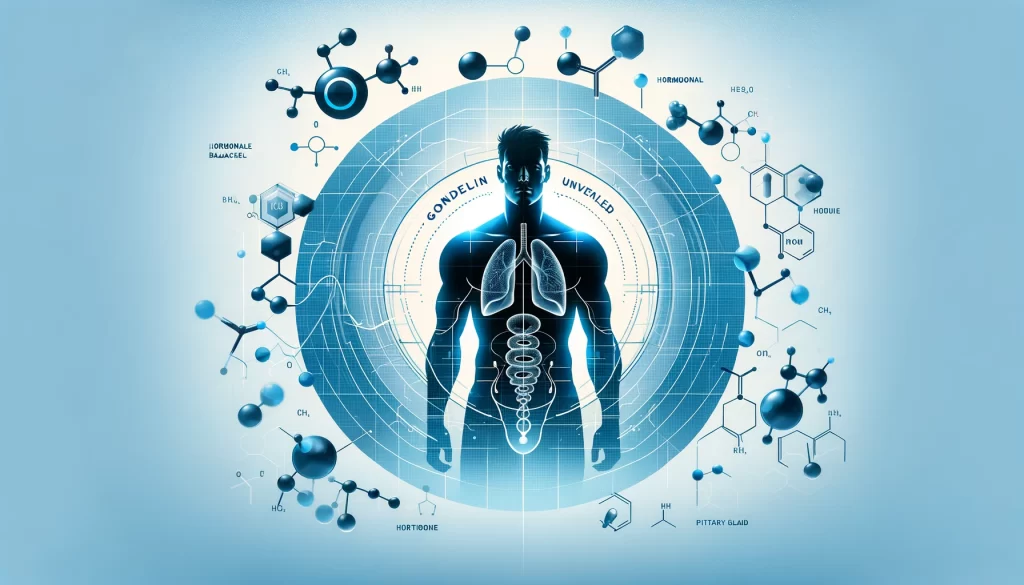
Gonadorelin, a synthetic analog of gonadotropin-releasing hormone (GnRH), presents a novel and promising approach to treating erectile dysfunction (ED), especially in cases driven by hormonal imbalances. This therapy not only addresses the symptoms of ED but also targets one of its underlying causes, offering a more comprehensive treatment option compared to conventional methods.
In conclusion, Gonadorelin offers a targeted, effective, and innovative approach for treating certain types of erectile dysfunction, particularly those arising from hormonal imbalances. Its ability to harmonize the body’s natural hormone production presents a significant advancement in ED therapy. As it becomes more integrated into standard treatment regimes, Gonadorelin is expected to improve the outcomes for many patients, making it a vital component of future ED treatments.
Gonadorelin Erectile Dysfunction, Gonadorelin Erectile Dysfunction, Gonadorelin Erectile Dysfunction, Gonadorelin Erectile Dysfunction, Gonadorelin Erectile Dysfunction, Gonadorelin Erectile Dysfunction, Gonadorelin Erectile Dysfunction, Gonadorelin Erectile Dysfunction, Gonadorelin Erectile Dysfunction, Gonadorelin Erectile Dysfunction, Gonadorelin Erectile Dysfunction, Gonadorelin Erectile Dysfunction, Gonadorelin Erectile Dysfunction, Gonadorelin Erectile Dysfunction, Gonadorelin Erectile Dysfunction, Gonadorelin Erectile Dysfunction, Gonadorelin Erectile Dysfunction, Gonadorelin Erectile Dysfunction, Gonadorelin Erectile Dysfunction, Gonadorelin Erectile Dysfunction, Gonadorelin Erectile Dysfunction, Gonadorelin Erectile Dysfunction, Gonadorelin Erectile Dysfunction, Gonadorelin Erectile Dysfunction, Gonadorelin Erectile Dysfunction, Gonadorelin Erectile Dysfunction, Gonadorelin Erectile Dysfunction, Gonadorelin Erectile Dysfunction, Gonadorelin Erectile Dysfunction, Gonadorelin Erectile Dysfunction, Gonadorelin Erectile Dysfunction, Gonadorelin Erectile Dysfunction, Gonadorelin Erectile Dysfunction, Gonadorelin Erectile Dysfunction, Gonadorelin Erectile Dysfunction, Gonadorelin Erectile Dysfunction, Gonadorelin Erectile Dysfunction, Gonadorelin Erectile Dysfunction, Gonadorelin Erectile Dysfunction, Gonadorelin Erectile Dysfunction, Gonadorelin Erectile Dysfunction, Gonadorelin Erectile Dysfunction, Gonadorelin Erectile Dysfunction, Gonadorelin Erectile Dysfunction, Gonadorelin Erectile Dysfunction, Gonadorelin Erectile Dysfunction, Gonadorelin Erectile Dysfunction, Gonadorelin Erectile Dysfunction, Gonadorelin Erectile Dysfunction, Gonadorelin Erectile Dysfunction, Gonadorelin Erectile Dysfunction, Gonadorelin Erectile Dysfunction, Gonadorelin Erectile Dysfunction, Gonadorelin Erectile Dysfunction, Gonadorelin Erectile Dysfunction, Gonadorelin Erectile Dysfunction, Gonadorelin Erectile Dysfunction, Gonadorelin Erectile Dysfunction, Gonadorelin Erectile Dysfunction, Gonadorelin Erectile Dysfunction, Gonadorelin Erectile Dysfunction, Gonadorelin Erectile Dysfunction, Gonadorelin Erectile Dysfunction, Gonadorelin Erectile Dysfunction, Gonadorelin Erectile Dysfunction, Gonadorelin Erectile Dysfunction, Gonadorelin Erectile Dysfunction, Gonadorelin Erectile Dysfunction, Gonadorelin Erectile Dysfunction, Gonadorelin Erectile Dysfunction, Gonadorelin Erectile Dysfunction, Gonadorelin Erectile Dysfunction,

